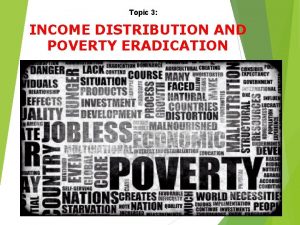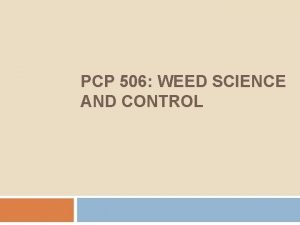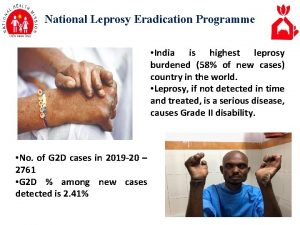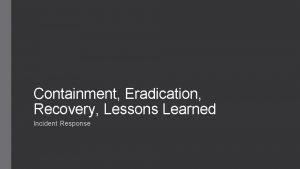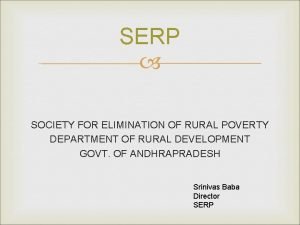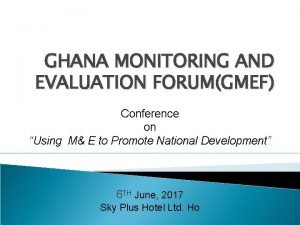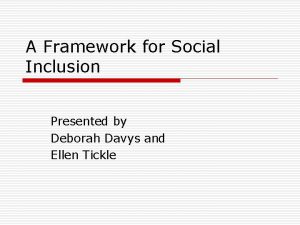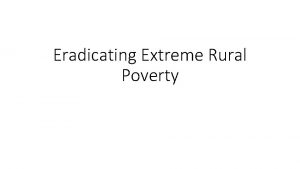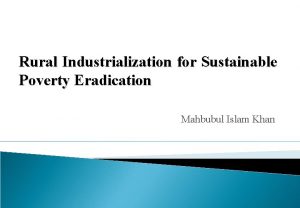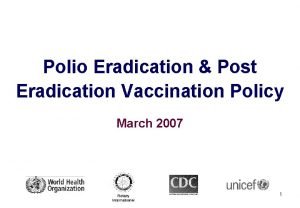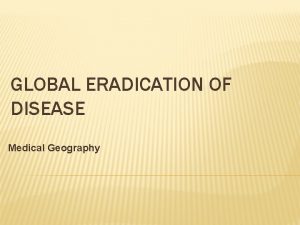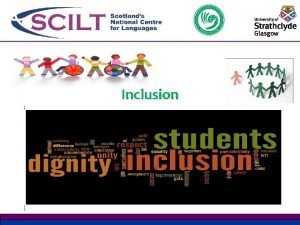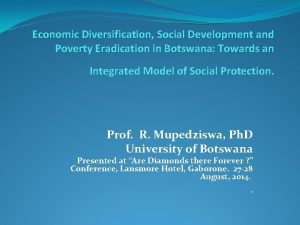Poverty Eradication and Social Inclusion in Rural and









- Slides: 9

Poverty Eradication and Social Inclusion in Rural and Urban settings Jinja – Uganda experience Nangobi Joyce Rosemary Director – Slum Women’s Initiative for Development swidorg@yahoo. com

Women and poverty in Uganda • Women are worst hit by chronic poverty in Uganda. They are the most illiterate, the most involved in ungainful employment or work where they don’t get paid. • Women bear the role of bringing up children and ensuring they go to school. • A report entitled - Chronic Poverty in Uganda; The Policy Challenges - reveals that over 8 million of 30. 7 million people are chronically poor, with women forming the bulk. Overall, 27% of the chronically poor households in rural areas are headed by women with the percentage rising to 40% in the urban setting.

Challenges faced by women and girls in Jinja, Uganda Urban housing challenge Climate change

Other challenges include • Difficulties in access to resources for example land, financial resources • HIV/AIDS • Ignorance about human rights • Urbanization/industralization

SWID - Interventions • Organizing women & girls in community based saving and credit groups and empowering them with leadership skills, business skills. • Revolving Loan Fund (women have access to credit to start and boost their businesses). • Land titling initiative. This is empowering women and girls to own, control and access land in both rural and urban communities.

SWID interventions cont’d • Food Security for example soybean and fruit tree growing ( women produce enough for home consumption and sell the surplus to earn income). • Involving grassroots women in decisionmaking processes that affect their lives and that they are able to contribute to hence benefit from development. • Livestock initiative

House construction project (rental apartments).

Accomplishments • Through the revolving loan fund, 120 women have accessed credit to purchase land. • 600 women from 22 communities are engaged in food security initiative. • The revolving fund is directly benefiting 160 women who are involved in different income generating activities • changed women’s lives with increased empowerment

Lessons Learned • Change is gradual • Documenting best practices enhances transfer of the practice to new communities. • Learning exchanges are key to enhance replication of the best practices • Collaborated with women organized groups enhances togetherness of women. • Thank You
 What is absolute poverty
What is absolute poverty H pylori eradication therapy
H pylori eradication therapy Weed eradication definition
Weed eradication definition National leprosy eradication programme ppt
National leprosy eradication programme ppt Containment eradication
Containment eradication Www serp ap gov in mobile bookkeeping
Www serp ap gov in mobile bookkeeping Gmef meaning
Gmef meaning Fondo de inclusión social energético fise
Fondo de inclusión social energético fise Social inclusion framework
Social inclusion framework Social thinking social influence social relations
Social thinking social influence social relations
